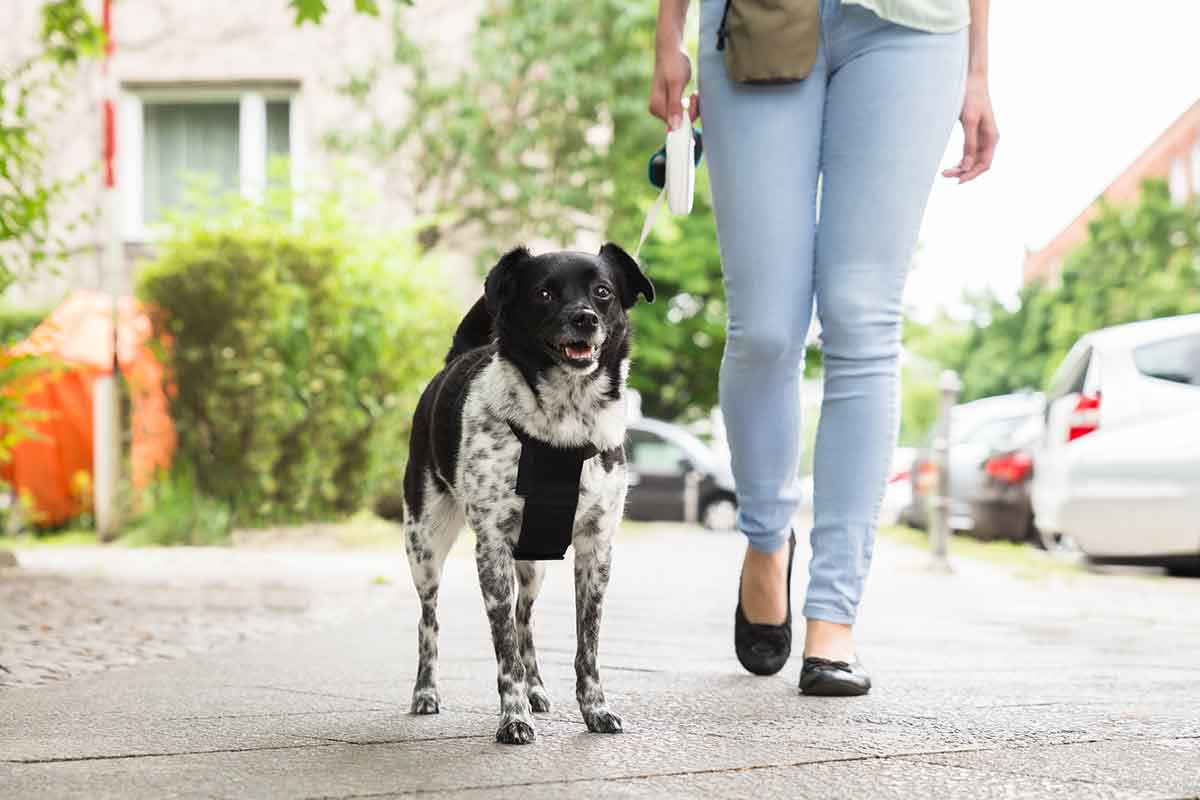The retractable leash, also referred to as a flexi lead, can allow dogs to be up to 26 feet ahead of their owners during walks. Proponents say it gives these dogs “freedom” to explore their surroundings.
However, many veterinarians, dog trainers, pet sitters and dog walkers say the extendable leads unleash far too many dangers to dogs and to the people holding the bulky, plastic handle at the end of the line.
“These leashes do not provide adequate control, and can get stuck in the open position,” says Mike LoSasso, DVM, a veterinarian board-certified in emergency medicine who operates the Frisco Emergency Pet Care hospital in Frisco, Texas. “Once extended out, that line can wrap around people’s legs or pets’ legs. It’s dangerous. I do hate those leashes.”
Jamie Migdal, founder of a pet educational site called Fetch Find, is a professional dog trainer. She supports the Fear Free Pets stress-free philosophy and spends a lot of time educating pet parents she meets in her Chicago neighborhood and at pet conferences about the dangers of flexi-leads.
“I’ve seen too many preventable incidents happen to flexi-led dogs,” says Migdal. She identifies these behavior and injury issues:
* Can trigger anxiety, stress, and fear in your dog. “If you drop the handle and it falls to the ground, your dog can easily flee in terror from the relentless, clattering ‘pursuer,’ ” says Migdal. “No matter how solid your dog’s recall is, there are very few who will listen to voice commands when that plastic case is bounding along behind them.”
* Can cause cuts, abrasions, falls, and choking. “Rope burns, gouges, and lacerations are common flexi-leash injuries to both humans and dogs,” says Migdal. “Whiplash can also occur with the sudden stop when the leash runs out of line, causing a small dog to be jerked backward and even become airborne.”
Migdal adds that walks with dogs should be just that – with your dog. That’s why she favors walking dogs on four- or six-foot leashes so the dog is near you. You can better communicate with a dog at this close distance.
“Dogs are incredible observers,” says Migdal. “They are hyper aware of changes in the environment and may react far too quickly to something before the person can safely bring the dog back closer to them.”
Joette White and other professional pet sitters ban the use of retractable leads by their staffs. White operates Park Cities Pet Sitter, Inc., one of the country’s largest professional pet sitting companies, based in Dallas.
“There are too many negative issues associated with these types of leashes,” says White. “There is no way one of my pet sitters could get control of a client’s dog should a loose dog approach. Also, the line can snap and cut through your hand.”
What does White say to those who use retractable leads as a way to give dogs a sense of freedom on walks?
“You are putting your dog at risk, because you can’t predict what may happen on a dog walk,” says White. “We spend a lot of time educating our clients on safe ways to walk dogs. The ultimate goal is a safe, enjoyable walk for both the dog and the person.”
This article was reviewed/edited by board-certified veterinary behaviorist Dr. Kenneth Martin and/or veterinary technician specialist in behavior Debbie Martin, LVT.








